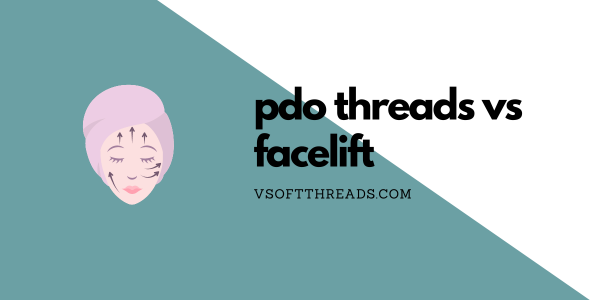
Are you looking to rejuvenate your face to get that youthful look back? Do you want to address some of the signs of aging you can see on your face, including sagging skin, wrinkles and more?
If you answered to yes to the above questions, you’re certainly not alone. Many people are looking to do exactly that, especially as they get older.
In the past, the only option for people in this situation was to get a surgical facelift. While those procedures do offer many benefits, there are a lot of drawbacks as well, including cost, recovery time and the fact that you need to undergo surgery.
Luckily, there are many more options for people today, led by PDO threads. Using these thin, hair-like surgical sutures, practitioners are able to give people the youthful look they want in their face without the high cost, long recovery time and surgery.
If you’re looking to rejuvenate your face, it’s important to understand all of your options. Below, we present the case of PDO threads vs facelift, broken down by all the different factors, so you can see all the benefits that the non-surgical alternative provides.
While traditional facelifts once had a place in aesthetic medicine – and still do in some cases – procedures using PDO threads simply provide too many advantages today to overlook. They produce excellent results, lifting parts of your face like a traditional facelift, but without the significant downtime and recovery period, at a much lower cost and without the surgery that a facelift requires.
Table of Contents
Add a header to begin generating the table of contents
 Medically reviewed by: Elizabeth Williams RN
Medically reviewed by: Elizabeth Williams RN
Updated: 9/17/2024
What the Procedures Involve
The biggest difference between PDO threads and a traditional facelift is how the procedures are completed.
Traditional facelifts require surgery. This means you need to receive general anesthesia so that you’re not awake while the procedure is going on.
Once that has been administered, the surgeon will physically reposition some of the tissue in your face and “lift” parts of your face up. This is what will give you the look that you desire.
PDO threads, by contrast, don’t require this invasive procedure. Practitioners can use local numbing agents to make you more comfortable, and only need to insert the thin threads into your skin with a pre-loaded cannula.
While you are awake for the entirety of the procedure, it is not painful. You may just feel some pressure and tugging on your face as the PDO threads are put into place.
Downtime and Recovery
Another major difference between the two procedures is the downtime that is required after the procedure is over.
With traditional facelifts, the recovery time is much longer than PDO threads, just because it’s a surgical procedure. In most cases, you will need to recover for at least two weeks before you can re-engage in most of your day-to-day activities, including social activities.
You also will likely be advised to avoid all physical activity for at least one month following your facelift procedure. In the meantime, you may experience significant swelling and bruising on your face, which could require pain-killing prescriptions to help you manage.
The downtime with PDO threads is much shorter. You’ll be able to resume almost all of your normal day-to-day activities the moment you leave the office.
You will be advised to avoid strenuous activities such as weight lifting or other heavy exercises for at least a week or two. This will ensure that the PDO threads stay in place and your body has time to heal.
Most people experience some swelling and bruising on their face with PDO threads, but this is often minor and goes away after about a week. It also can be treated with simple ice and some over-the-counter medications.
Cost and How Long Results Last
Any comparison of PDO threads vs facelift has to include cost.
Surgical facelifts can be very expensive. Depending on where you live and exactly what you’re getting done, this procedure can cost as much as $50,000 or more.
In many cases, the results of a traditional facelift can last as much as 10 years, depending on several factors, including your specific body and how well you take care of yourself.
PDO threads procedures, on the other hand, can cost as little as $1,000 — again, depending on where you live and what you’re getting done.
The results from these procedures typically last for one year, though they could last multiple years depending on your body and how well you take care of yourself.
The great part about PDO threads procedures is that you can repeat them as often as you’d like to achieve your desired results. This means that even if you repeated this procedure once a year, you may only spend $10,000 total over 10 years versus five times that much with a traditional facelift.
Choose Non-Invasive PDO Threads Procedures
While traditional facelifts once had a place in aesthetic medicine — and still do in some cases — procedures using PDO threads simply provide too many advantages today to overlook.
They produce excellent results, lifting parts of your face like a traditional facelift, but without the significant downtime and recovery period, at a much lower cost and without the surgery that a facelift requires.
To get the best results possible, make sure that your practitioner uses PDO threads from V Soft Lift.
We have created a big line of PDO threads so that specific threads can be used for certain procedures and skin types, ensuring that your results are the best possible.
For more information, contact us today.
